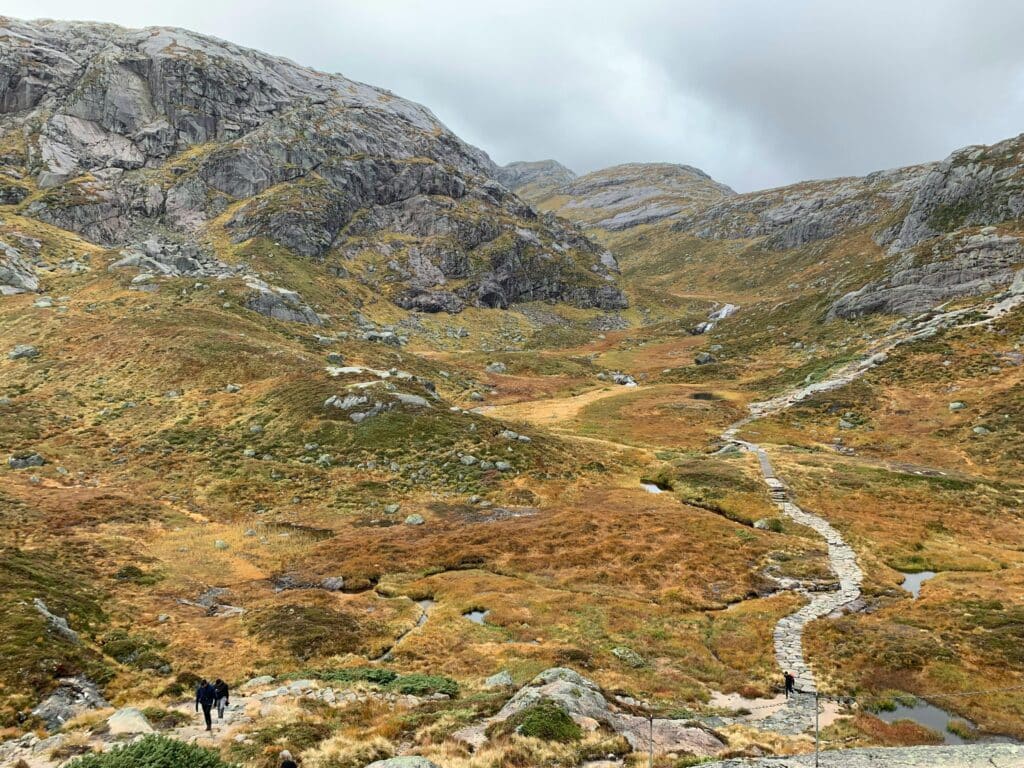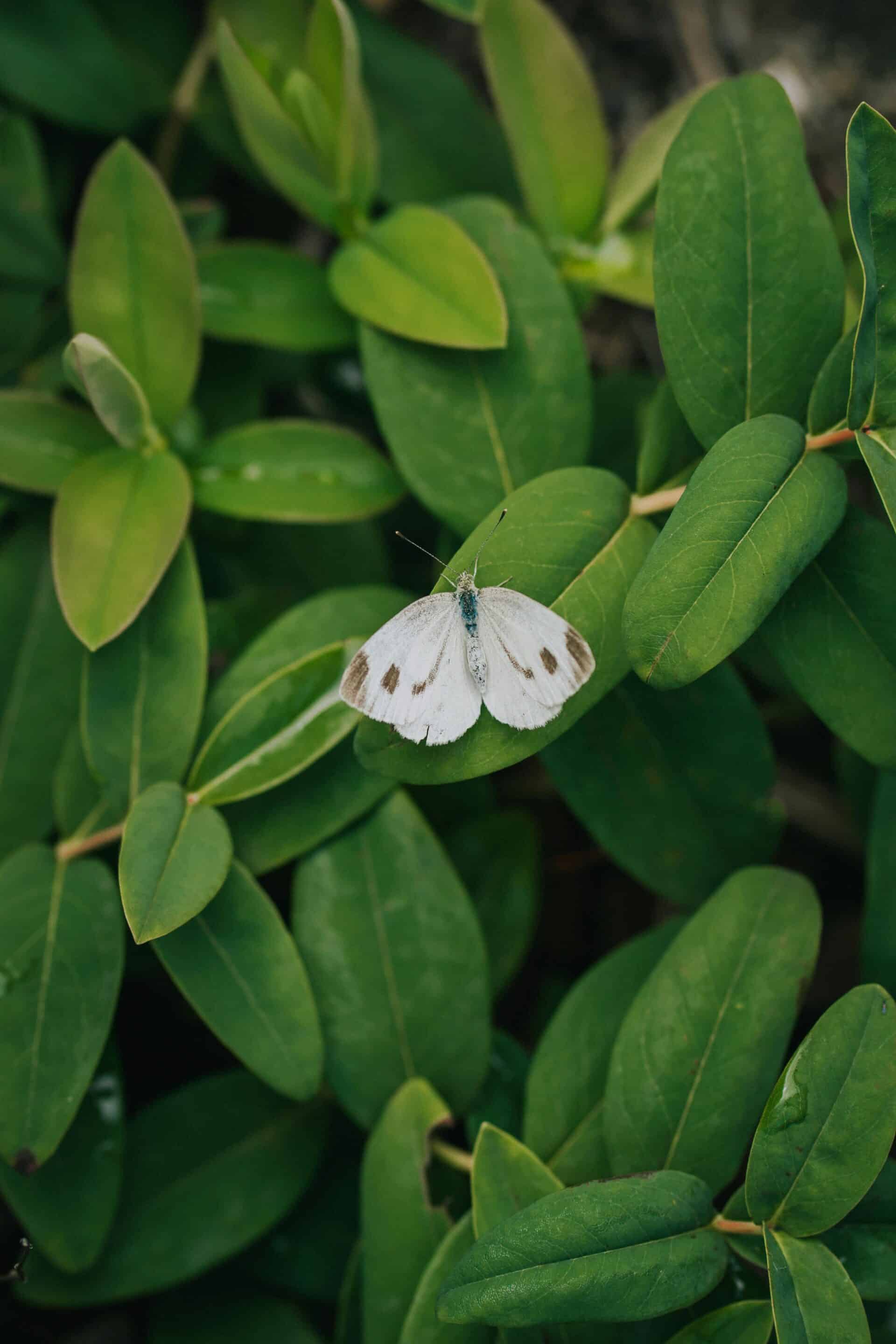Imagine yourself walking through the lush rainforests of Costa Rica, surrounded by an abundance of vibrant flora, each more intriguing than the last. From towering trees to delicate ferns, this beginner’s guide will introduce you to the fascinating world of plant diversity in Costa Rica. Prepare to be amazed as we uncover the secrets of this tropical paradise, showcasing the breathtaking variety of plants that call Costa Rica home. Whether you are a seasoned botanist or simply have a curiosity for nature, this guide is your passport to discovering the wonders of Costa Rican plant life. Get ready to embark on a journey that will leave you in awe of the extraordinary beauty that lies within this enchanting country.

Understanding Costa Rica’s Biodiversity
Overview of Costa Rica’s unique ecosystem
Costa Rica, known as the “Rich Coast,” is a country renowned for its exceptional biodiversity. Nestled in Central America, it is a land filled with lush rainforests, towering volcanoes, stunning beaches, and vibrant cloud forests. This small country is home to an astounding 4% of the world’s species, making it a hotspot for nature enthusiasts and scientists alike. From tropical plants to fascinating bromeliads and orchids, Costa Rica’s ecosystem is teeming with life.
The role of climate and geography in biodiversity
Costa Rica’s remarkable biodiversity can be attributed to its diverse climate and unique geography. The country is divided into several distinct regions, each with its own characteristic climate and vegetation. From the verdant rainforests of the Caribbean lowlands to the dry forests of Guanacaste, Costa Rica’s plant life has adapted to thrive in a wide range of environments. The country’s location between the Pacific Ocean and the Caribbean Sea, along with its varied topography, creates a multitude of microclimates, further contributing to the richness of its flora.
Importance of conservation efforts
The incredible biodiversity of Costa Rica is not solely a result of natural factors but also owed to the country’s strong commitment to conservation. Recognizing the value of its ecological treasures, Costa Rica has set aside a significant portion of its land for preservation. Currently, over 25% of the country is protected in national parks, biological reserves, and wildlife refuges. These protected areas serve as havens for countless plant species, allowing them to flourish free from the threats of deforestation and habitat destruction. Conservation efforts in Costa Rica extend beyond protected areas and involve community engagement and citizen science programs, which help raise awareness and actively involve people in the preservation of the country’s plant diversity.
Classification of Costa Rican Flora
Broad classifications: Trees, Shrubs, Herbs, Vines, etc.
Costa Rican flora can be categorized into various broad classifications, including trees, shrubs, herbs, vines, and many others. Trees are a prominent feature of the country’s landscapes, forming dense canopies in the rainforests and providing essential habitats for numerous organisms. Shrubs, with their shorter stature, are found throughout various ecosystems and often contribute to the understory vegetation. Herbs, both native and cultivated, lend their vibrant colors and fragrances to gardens and forest floors. Vines, equipped with their climbing capabilities, weave their way through the forests, using trees as support. The diverse range of plants in these classifications adds to the rich tapestry of Costa Rica’s natural wonders.
Native and endemic species of Costa Rica
Costa Rica boasts a remarkable array of native and endemic plant species. Native species are those that have naturally occurred in the region for thousands of years. Many of these plants have adapted to the local climate and soil conditions, forming integral parts of the intricate ecosystems. Endemic species, on the other hand, are exclusive to Costa Rica and are not found anywhere else in the world. These unique plants have evolved in isolation, resulting in distinctive characteristics and often requiring specific habitats to thrive. Exploring the native and endemic flora of Costa Rica is like embarking on a captivating journey through time and evolution.
Introduced and invasive plant species
Alongside the native and endemic plants, Costa Rica is also home to introduced and invasive species. Introduced species are those that have been intentionally or accidentally introduced to the country by humans. They may have been brought in for agricultural purposes, landscaping, or even as ornamental plants. Invasive species, however, pose a threat to the native ecosystem as they aggressively outcompete native plants, disrupt ecological balance, and reduce biodiversity. Understanding and managing these introduced and invasive species is crucial for preserving the natural habitats and maintaining the unique plant diversity of Costa Rica.

Understanding Botanical Families in Costa Rica
Important botanical families
Botanical families serve as a foundation for understanding the vast array of plant species in Costa Rica. These families are groups of plants that share common characteristics, often including similar flower structures, growth habits, or genetic relationships. Some of the most important botanical families in Costa Rica include the Orchidaceae (orchid family), Bromeliaceae (bromeliad family), Fabaceae (legume family), and Melastomataceae (melastome family). Exploring the diversity and traits of these families allows for a deeper appreciation of the interconnectedness and complexity of Costa Rica’s flora.
Unique characteristics of different plant families
Each plant family in Costa Rica possesses its own unique set of characteristics. The Orchidaceae family, for example, is renowned for its intricate and diverse flowers, making it one of the most beloved plant families in the country. The Bromeliaceae family, on the other hand, includes species that thrive in a range of habitats, from the forest canopy to the forest floor, and are known for their ability to collect water in their rosettes. Understanding these distinct characteristics of plant families is invaluable in identifying and appreciating the incredible plant diversity found throughout Costa Rica.
Species identification within plant families
Identifying plant species within their respective families can be a fascinating and rewarding endeavor. By examining key features such as leaf arrangement, flower structure, and growth habit, one can begin to piece together the puzzle of species identification. Field guides and resources specific to Costa Rican flora can be invaluable tools in this process. Species identification not only enhances our understanding of the intricate relationships within plant families but also contributes to conservation efforts by aiding in the monitoring and protection of endangered or rare species.
Iconic Trees of Costa Rica
Identifying popular Costa Rican trees
Costa Rica boasts a multitude of iconic trees that define its landscapes and play crucial roles in the ecosystem. One such tree is the Guanacaste, Costa Rica’s national tree, known for its broad canopy and majestic presence. The towering Ceiba tree, with its impressive buttress roots, is another iconic species, often considered sacred by indigenous communities. The Montezuma Cypress, with its gnarled branches and resilient nature, is yet another remarkable tree found in Costa Rica. Recognizing and appreciating these popular Costa Rican trees allows for a deeper connection to the natural wonders of the country.
The ecological importance of trees
Trees form the backbone of Costa Rica’s ecosystems, providing vital ecological services and supporting a myriad of life forms. They are not only responsible for producing oxygen and removing carbon dioxide from the atmosphere but also serve as key habitats for a diverse array of animals and plants. Trees help regulate water cycles, prevent soil erosion, and provide shade and shelter for countless organisms. Understanding the ecological importance of trees highlights the urgency of protecting and preserving these invaluable components of Costa Rica’s biodiversity.
Role of trees in indigenous cultures
Trees hold significant cultural and spiritual importance in indigenous cultures throughout Costa Rica. They are viewed as vital members of the community, deeply connected to the well-being and harmony of both the human and natural world. Indigenous communities have developed traditional knowledge and practices centered around trees, utilizing their medicinal properties, building with their wood, and seeking guidance and inspiration from their wisdom. Recognizing and respecting the role of trees in indigenous cultures fosters a deeper appreciation for the intricate relationship between people and nature.

Costa Rica’s Fascinating Bromeliads and Orchids
Introduction to Costa Rica’s bromeliads
Costa Rica is home to a captivating array of bromeliads, a diverse family of plants found throughout the country. Bromeliads are characterized by their rosette-like growth habit and their ability to collect and store water in their leaves. These unique plants adapt to a range of habitats, from the rainforests to the cloud forests, often forming colorful and dramatic displays. Some popular bromeliads in Costa Rica include the Tillandsia (Spanish Moss), the Guzmania, and the epitome of bromeliads, the pineapple. Exploring the world of Costa Rican bromeliads offers a glimpse into the resilience and beauty of these fascinating plants.
Overview of Costa Rica’s orchids
Costa Rica is a paradise for orchid enthusiasts, as it is home to one of the most diverse orchid populations in the world. With over 1,500 species, the country showcases an incredible range of colors, shapes, and fragrances. Orchids can be found in a variety of habitats, from the forest understory to the upper canopy, displaying their blooms on tree trunks, branches, and even rocks. The iconic Cattleya, the delicate and rare Ghost Orchid, and the vibrant Dancing Lady Orchid are just a few examples of the enchanting orchids that thrive in Costa Rica. Discovering the world of Costa Rican orchids unravels the intricate beauty and allure of these captivating flowers.
Understanding the complexity of bromeliads and orchids
Bromeliads and orchids, though visually stunning, exhibit a complexity that extends beyond their beauty. Their remarkable adaptability to different environments, such as the cloud forests and tropical rainforests, showcases their resilience and ability to thrive in challenging conditions. Their unique reproductive strategies, including air pollination and symbiotic relationships with specific pollinators, add to their intrigue. Exploring the complexity of bromeliads and orchids not only deepens our appreciation for their astounding beauty but also unveils the fascinating world of plant evolution and adaptation.
Exploring the Diversity of Ferns and Mosses
Ferns: Unassuming yet diverse
Ferns, though often overshadowed by the more conspicuous flowering plants, contribute significantly to Costa Rica’s plant diversity. These ancient plants can be found in a variety of habitats, from wet rainforests to drier understory environments. With their delicate fronds and ability to thrive in low-light conditions, ferns play a crucial role in maintaining moisture levels and providing ground cover. Exploring the diverse range of fern species in Costa Rica unveils a wealth of intricate shapes, sizes, and textures, reminding us of the understated beauty lurking beneath the forest canopy.
Mosses: Unsung heroes of the forest floor
Mosses, often overlooked and underappreciated, are the unsung heroes of Costa Rica’s forest floors. These small and unassuming plants thrive in the damp and shaded environments, forming dense mats and carpets across the forest landscape. Mosses play vital roles in retaining moisture, preventing soil erosion, and providing habitats for a wide variety of microorganisms. Their ability to absorb and retain water makes them essential contributors to the overall health of the ecosystem. Taking the time to observe and appreciate the intricate world of mosses brings attention to the often-unnoticed wonders at our feet.
Distinguishing between ferns and mosses
While ferns and mosses may both inhabit the forest floor, they have distinct characteristics that differentiate the two. Ferns are vascular plants that reproduce through spores and possess true roots, stems, and leaves. Mosses, on the other hand, are non-vascular plants that reproduce through spores and lack true roots, stems, and leaves. Ferns typically have larger and more defined structures, while mosses appear as small, cushion-like growths. Understanding the differences between ferns and mosses allows for a deeper appreciation of the unique contributions each makes to Costa Rica’s biodiversity.

Plant Life in Costa Rica’s Wetlands and Mangroves
Importance of wetlands and mangroves
Costa Rica’s wetlands and mangroves are important ecosystems that provide crucial services to both humans and wildlife. Wetlands act as natural filters, cleansing water and preventing sediment runoff, while also serving as vital breeding grounds for countless species of birds, fish, and amphibians. Mangroves, with their unique adaptations to saline environments, offer protection against coastal erosion and serve as nursery habitats for various marine organisms. Recognizing the importance of these habitats promotes their preservation, ensuring the continued well-being of both the plant life and the wider ecosystem.
Noteworthy flora of wetlands
Costa Rica’s wetlands are home to a diverse range of plant species that have adapted to thrive in the waterlogged conditions. Aquatic plants such as water lilies, water hyacinths, and cattails dominate the water’s surface, displaying vibrant blooms and providing shelter for aquatic organisms. The wetland edges are characterized by reeds, sedges, and rushes, which create important transition zones between the water and the surrounding land. Exploring the noteworthy flora of Costa Rica’s wetlands reveals the resilience and adaptability of plants in dynamic and ever-changing environments.
Adaptations of mangrove plant species
Mangroves, with their ability to survive and thrive in saline and brackish environments, are well-adapted to the challenges of coastal areas. These unique trees have evolved remarkable adaptations to tolerate high levels of salt, such as specialized root systems, salt-excreting leaves, and air-breathing roots called pneumatophores. These adaptations allow mangroves to colonize and dominate the edges of estuaries and coastal areas, creating invaluable ecosystems that act as buffers against storm surges and provide essential habitats for a multitude of organisms. Understanding the adaptations of mangrove plant species sheds light on their critical role in coastal resilience and biodiversity.
Plants of Costa Rica’s Beaches and Coasts
Life on the coast: Surviving salt, sand, and sun
Plants that thrive along Costa Rica’s beaches and coasts face unique challenges posed by the harsh conditions of salt, sand, and sun. These resilient species have evolved a range of adaptations to survive in these coastal ecosystems. Salt-tolerant plants such as the seagrape and the beach morning glory possess mechanisms to excrete salt from their leaves, enabling them to thrive in saline environments. Sand-binding plants like the beach grasses and the beach morning glory have specialized root systems that stabilize the shifting sands. Sun-loving plants such as the cocoplum and the seaside heliotrope have dense canopies and waxy leaves that protect against intense sunlight. Observing and understanding the plants of Costa Rica’s beaches and coasts illuminates the incredible ability of nature to adapt and thrive in hostile environments.
Coastal plants and their adaptations
Costa Rica’s coastal plants exhibit a range of fascinating adaptations that enable them to withstand the challenging coastal conditions. Some plants, like the beach almond, develop root systems that allow them to anchor into the sand, providing stability against erosion and tidal forces. Others, like the sea purslane, have succulent leaves that store water, enabling them to survive in dry coastal areas. Coastal plants are often well-equipped to disperse their seeds through various mechanisms, such as buoyant fruits or seeds that are carried by ocean currents. The adaptations of coastal plants exemplify nature’s ingenuity in conquering the diverse range of coastal habitats found in Costa Rica.
Special spotlight: Sea grapes and beach almonds
Among the notable coastal plants in Costa Rica, the sea grape and the beach almond stand out for their significance and unique characteristics. The sea grape, with its distinctive rounded leaves and clusters of purple fruits, is not only a visually appealing tree but also plays a vital role in stabilizing coastal dunes with its extensive root system. The beach almond, with its dense foliage and vibrant red or yellow fruits, is another iconic coastal tree that provides shade and shelter for various species, including nesting turtles. These coastal trees, with their crucial contributions to the ecosystem, serve as reminders of the interconnectedness between plants, animals, and the coastal environment.

Costa Rica’s Extraordinary Cloud Forest Flora
Luxurious life in the clouds: Cloud forest flora
The cloud forests of Costa Rica are ethereal paradises enveloped in mist and draped in emerald green. These unique ecosystems are characterized by constant moisture, cool temperatures, and a wealth of biodiversity. Cloud forest flora has adapted to thrive in these conditions, showcasing a range of unique adaptations. Epiphytes, such as orchids and bromeliads, take advantage of the abundant moisture in the air and grow on tree trunks and branches. Mosses and ferns cover the forest floor, creating a carpet of lush green. The diversity of plant life in the cloud forests of Costa Rica is a testament to nature’s ability to flourish in extraordinary circumstances.
Epiphytes: The cloud dwellers
Epiphytes, or air plants, are a prominent feature of Costa Rica’s cloud forests. These remarkable plants have evolved a lifestyle that allows them to grow on the surfaces of other plants, such as tree branches, without relying on soil for nutrients. Epiphytes, including orchids, bromeliads, and ferns, capture moisture and nutrients from the air and rain, utilizing specialized structures such as aerial roots and scales. Their adaptability to the cloud forest environment enables them to form intricate ecosystems within the canopy, offering habitats for a wide range of animals and providing a stunning display of color and life. Exploring the world of epiphytes unveils the delicate balance and interconnectedness of Costa Rica’s cloud forest flora.
The spectacular Quetzal and the Aguacatillo tree
The cloud forests of Costa Rica are not only home to remarkable plant species but also provide habitats for stunning bird species, such as the resplendent Quetzal. The Quetzal, with its vibrant green plumage, long tail feathers, and red chest, is considered one of the most beautiful birds in the world. This elusive bird relies on the Aguacatillo tree, a vital component of the cloud forest ecosystem, for food. The bright red fruits of the Aguacatillo tree attract the Quetzal, making it easier to spot these magnificent birds in the misty cloud forests. The interdependence between the Quetzal and the Aguacatillo tree exemplifies the intricate relationships that exist within Costa Rica’s extraordinary cloud forest flora.
Getting Involved with Plant Conservation in Costa Rica
The role of national parks and reserves
Costa Rica’s commitment to plant conservation is evident through its extensive network of national parks and reserves. These protected areas serve as havens for countless plant species, providing safe habitats and ensuring their long-term survival. National parks and reserves play a crucial role in preserving the ecological integrity of diverse ecosystems, acting as vital corridors for plant species to thrive and disperse. These protected areas also offer opportunities for scientific research, education, and eco-tourism, further contributing to the preservation of Costa Rica’s rich plant diversity.
Community involvement and citizen science
Conserving plant diversity in Costa Rica relies not only on government initiatives but also on community involvement and citizen science. Costa Rican communities actively participate in conservation efforts through sustainable land management practices, reforestation projects, and the protection of valuable habitats. Citizen science programs engage the general public in collecting data on plant species, monitoring population trends, and contributing to scientific research. By involving communities and promoting citizen science, Costa Rica fosters a sense of ownership and responsibility for the country’s plant diversity among its residents and visitors.
Joining plant conservation organizations
For those passionate about plant conservation, joining plant conservation organizations offers a valuable opportunity to contribute to Costa Rica’s efforts. These organizations work tirelessly to protect endangered plant species, restore degraded habitats, and raise awareness about the importance of preserving biodiversity. Whether through volunteering, donating, or participating in field activities, individuals can actively support and drive positive change within Costa Rica’s plant conservation landscape. By joining forces with like-minded individuals and organizations, one can make a lasting impact on the future of Costa Rica’s plant diversity.
In conclusion, Costa Rica’s plant diversity is a treasure worth celebrating and protecting. The country’s unique ecosystem, influenced by climate, geography, and conservation efforts, nurtures a vast array of flora. From iconic trees to captivating bromeliads and orchids, from unassuming ferns and mosses to resilient coastal plants, Costa Rica’s plant life is a testament to the tremendous adaptability and interconnectedness of the natural world. By understanding and appreciating the diverse plant species of Costa Rica, we can all play a role in safeguarding the country’s incredible biodiversity for generations to come.







0 Comments